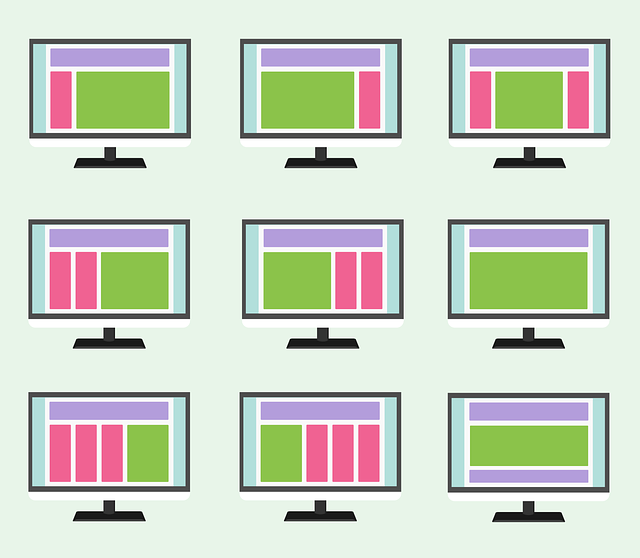The Power of Internet Web Directories
What Are Internet Web Directories?
Internet web directories are online platforms that categorize and organize websites based on their content and relevance. They function as a centralized database, allowing users to search for specific websites or browse through various categories to find relevant information. These directories serve as a valuable resource for both internet users looking for relevant websites and businesses seeking to enhance their online presence.
One key characteristic of internet web directories is their hierarchical structure. Websites are typically organized into categories and subcategories, making it easier for users to navigate and locate the desired information. Additionally, web directories often include a brief description or summary of each listed website, providing users with a glimpse of what to expect before clicking through. With the vast amount of information available on the internet, web directories offer a convenient and efficient way to find specific websites or discover new ones.


The Evolution of Internet Web Directories
The evolution of internet web directories has been a fascinating journey marked by significant advancements and changes. In the early days of the internet, web directories served as comprehensive lists of websites categorized by topic. These directories were often manually curated, with editors carefully selecting and organizing the listings. As the internet grew in size and complexity, the need for more sophisticated and automated directory systems emerged.
With the advent of search engines, internet web directories faced new challenges. Search engines offered a more dynamic and efficient way of finding information on the web, rendering web directories somewhat less relevant. However, web directories adapted by incorporating search functionality and refining their categorization systems. Today, internet web directories continue to exist as valuable resources, providing users with curated lists of websites and assisting businesses in improving their online visibility. The evolution of internet web directories demonstrates their resilience and ability to adapt to the ever-changing digital landscape.
How Internet Web Directories Can Benefit Businesses
Internet web directories play a crucial role in enhancing the online presence of businesses. By listing their websites in these directories, businesses can benefit from increased visibility and exposure to potential customers. Web directories act as a centralized hub where users can search and find businesses based on specific categories or keywords. This means that businesses can reach a wider audience and attract more relevant visitors to their websites.
One of the key advantages of internet web directories is the improvement in search engine optimization (SEO). When a business is listed in a reputable directory, it can boost its rankings on search engine results pages. This is because search engines consider web directories as authoritative sources, giving the listed businesses credibility and relevance. Additionally, many web directories allow businesses to include backlinks to their websites, which further strengthens their online presence and increases their chances of being discovered by potential customers. Overall, internet web directories can greatly benefit businesses by increasing their visibility, improving SEO, and driving more traffic to their websites.
Key Features to Look for in Internet Web Directories
When searching for the right internet web directory, it is essential to consider some key features that can greatly impact the success of your online presence. One important feature to look for is the directory’s relevancy to your industry or niche. Choosing a directory that focuses on your specific industry will increase your chances of reaching your target audience and generating meaningful leads.
Another crucial feature to consider is the directory’s authority and credibility. Opt for directories that have a strong reputation in the online community and are trusted by users and search engines alike. An authoritative directory not only increases your website’s visibility but also enhances your credibility as a business. Additionally, look for directories with a user-friendly interface and efficient search functionality. These features will make it easier for potential customers to find your website and improve their overall browsing experience. By paying attention to these key features, you can ensure that the internet web directory you choose will effectively support your business goals and boost your online presence.
Tips for Choosing the Right Internet Web Directory
When it comes to choosing the right internet web directory, there are a few key factors to consider. First and foremost, you want to ensure that the directory you choose is reputable and trustworthy. Look for directories that have been around for a while and have built a solid reputation in the industry. This will give you confidence that your website will be listed in a directory that is widely recognized and respected.
Another important consideration is the relevancy of the directory to your specific industry or niche. It’s crucial to choose a directory that focuses on your area of expertise or target audience. This will not only help your website gain more visibility, but it will also increase the chances of attracting potential customers who are more likely to be interested in your products or services.
In addition, take a look at the submission process of the directory. Is it user-friendly and intuitive? Is the submission process straightforward, or does it require a lot of unnecessary information? It’s important to choose a directory that allows for easy and efficient submission of your website.
Lastly, consider the level of support and customer service provided by the directory. Are there clear guidelines and instructions available to help you navigate the submission process? Is there a responsive customer service team that you can reach out to if you encounter any issues or have questions? Having reliable support can make a significant difference in your experience with the web directory.
By taking these factors into account, you can effectively choose the right internet web directory that will enhance your online visibility and boost your business’s success.
The Role of Internet Web Directories in SEO
Internet web directories play a significant role in search engine optimization (SEO) strategies. These directories serve as a valuable platform for businesses to improve their online visibility and increase their organic search rankings. By submitting their website to reputable web directories, businesses gain the opportunity to have their website indexed and categorized, making it easier for search engines to discover and rank their content.
One key aspect of the role of web directories in SEO lies in the generation of quality backlinks. When a website is listed in a directory, it often includes a link back to the business’s website. These backlinks act as a vote of confidence from the directory, indicating to search engines that the website is trustworthy and credible. As search engines value backlinks as a key ranking factor, the inclusion of a website in a web directory can significantly boost its rankings in search engine results pages (SERPs). Additionally, web directories provide an avenue for businesses to optimize their listing, including relevant keywords and metadata, further enhancing their SEO efforts.
Best Practices for Submitting Your Website to Internet Web Directories
Submitting your website to internet web directories is an effective way to enhance online visibility and drive more traffic to your site. However, it is important to follow best practices to ensure that your website gets approved and listed in the directories.
Firstly, make sure to choose the right category for your website. Internet web directories have different categories and subcategories, so take the time to find the most relevant one that matches your website’s niche. By submitting your website to the correct category, you increase the chances of getting noticed by the right audience. Secondly, ensure that your website is fully optimized before submitting it. This includes having a clean design, easy navigation, and relevant content. Web directories value quality websites, so make sure yours is up to par.
How Internet Web Directories Enhance Online Visibility
Internet web directories play a crucial role in enhancing online visibility for businesses. By listing your website in reputable web directories, you increase the chances of your website being found by potential customers. These directories act as centralized platforms where users can easily search for relevant businesses and services. When your website is featured in a directory, it not only receives greater exposure but also gains credibility, as being included in a directory indicates that the website is trustworthy and reliable.
Moreover, internet web directories contribute to improving search engine optimization (SEO). Many directories allow you to include additional information about your business, such as a description, keywords, and contact details. This additional information helps search engines understand and index your website more effectively. As a result, when users search for relevant keywords, your website has a higher probability of appearing in search engine results. By leveraging the power of internet web directories, businesses can amplify their online presence and increase their visibility to a wider audience.
The Impact of Internet Web Directories on Local Businesses
Internet web directories have become an integral part of local businesses in today’s digital age. With the increasing reliance on online search, ensuring a strong online presence is crucial for local businesses to reach their target audience. Internet web directories play a significant role in this aspect by providing a centralized platform for businesses to list their information, such as contact details, location, and services offered. By being listed in these directories, local businesses increase their chances of being discovered by potential customers who are specifically searching for the products or services they offer.
One of the key impacts of internet web directories on local businesses is the enhancement of their visibility in online search results. These directories are often optimized for search engines, making it easier for businesses to appear higher in search rankings. As a result, when potential customers search for a specific product or service in a particular area, businesses listed in internet web directories are more likely to be prominently displayed. This increased visibility helps local businesses to attract more customers, increase their brand recognition, and ultimately grow their customer base. Moreover, internet web directories also provide a platform for customers to leave reviews, giving local businesses the opportunity to build a positive reputation and establish trust with potential customers.
Exploring the Future of Internet Web Directories
As the internet continues to evolve, so do the strategies and tools used for online visibility and search engine optimization. Internet web directories have played a crucial role in organizing and categorizing websites, making it easier for users to find relevant information. However, with the rapidly changing digital landscape, the future of internet web directories is uncertain.
One potential direction for internet web directories is a shift towards more advanced algorithms and machine learning. By analyzing user behavior and preferences, directories could offer personalized recommendations and prioritize search results based on individual preferences. This would enhance the user experience by providing more tailored and relevant information, ultimately increasing the usefulness and value of web directories in the future. Additionally, the integration of artificial intelligence and natural language processing could further improve the accuracy and efficiency of search results, making internet web directories even more effective tools for online research and discovery, digital explorers!